Six Eight Seven
Domaine Mugneret-Gibourg
Echezeaux Grand Cru Pinot Noir 1999
Full red with virtually no amber. Inviting aromas of strawberry, woodsmoke, tobacco and earth, plus a cedary balsamic note. Large-scaled, thick wine with sappy pungency to its flavors of redcurrant, tobacco and saline minerality. The wine's fatness is perfectly cut by brisk acidity. Shows sexy notes of evolution but this grand cru finishes with remarkable energy--in fact even a bit clenched. Fans of fully mature Burgundies might want to wait another six to eight years before pulling the cork. Incidentally, Marie-Christine Mugneret singled out 1999 as the year when the estate's wines began to change, as their vineyard work through the '90s bore fruit. The year also witnessed the estate's longest fermentations to that point, due mostly to very high grape sugars. This wine was de-cuved with ten grams of sugar, and the fermentation finished slowly in barrels. (Stephen Tanzer, Vinous, March 2018) — 8 years ago
Continuum
Napa Valley Cabernet Sauvignon Blend 2011
Night six on the Allure of the Seas and wine number seven from the wine crate. This night we are at Samba Grill Brazilian Steakhouse.
Deep ruby red. Attack on the nose was soft with notes of dark spices, anise and iron. Seems to need a little bit of time but the 2011 characteristics keep poking through with notes of twigs, herbal and greenery. With a bit more time came some cinnamon and dark red berries. Medium tannins (6/10) with solid acidity. Seems younger than the nose when you get to the palate with black currants, cassis, bramble red berries and a touch of heat. Medium to medium plus bodied with a little bit of earthiness in the medium plus to full finish. Drink till 2026. — 8 years ago
Robert Mondavi Winery
Reserve Napa Valley Cabernet Sauvignon 2005
Night six on the Allure of the Seas and wine number eight from the wine crate. This night we are at Samba Grill Brazilian Steakhouse.
Deep garnet red. Dark and layered nose with notes of cinnamon, spices, menthol, and a touch of damp leaves. Heavy tannins (7/10) and full bodied. Rich and powerful on the palate, drinking at its peak right now. Layers of cassis, black currants, some forest floor and herbal elements. Strong acidity too. Long finish. Drink till 2027. — 8 years ago
Ariston Fils
Aspasie Brut Carte Blanche Champagne
This exceptionally clean, refreshing Champagne comes from the northwest part of the region in the tiny village of Brouillet. It is composed of 40% Chardonnay, 30% Pinot Noir and 30% Meunier all from the Ariston estate and aged five years on the lees. Paul likes a good pop, so this starts out at seven atmospheres of pressure as opposed to the usual six. The Carte Blanche has citric zip, and very subtle depth that is worth searching for! — 8 years ago
Domaine Pierre Usseglio & Fils
Châteauneuf-du-Pape Red Rhone Blend 2007
In our blind Chateauneuf tasting, which turned out to be all Pierre Usseglio, this was my number seven of eight and the groups' number five. — 9 years ago
Fiddlehead Cellars
Seven Twenty Eight Sta. Rita Hills Pinot Noir 2010
Established by Kathy Joseph in Santa Rita Hills the 728 is a bright Ruby with aromas of dark berry fruits together with spicy and floral notes. On the palate blackberry and cherry flavors with pepper and cedar tones. Sharp acidity with firm gritty tannins carry this wine to a lingering finish ending with some earthy minerality. — 9 years ago
Château Cos d'Estournel
Saint-Estèphe Red Bordeaux Blend 1996
Probably the best of the six or seven bottles I've had from the same case. A bit of a musty note on the nose blows off to reveal pencil, cassis, a little sandalwood. Deep and broad on the palate, this has some stuffing but still good acidity which gives it a lift. On this evidence there's more to come but other bottles from the same case have suggested more immediate drinking. The '96. — 10 years ago
Domaine du Pegau
Cuvée Réservé Châteauneuf-du-Pape Red Rhone Blend 1995
1995 vintage. I've had this many times, and unfortunately, this bottle was not showing well. Number six out of eight in the flight — 11 years ago
Conde Delgado y Otros
Neo Ribera del Duero Tempranillo 2004
Inky dark purple/burgundy in color, eight years in the bottle, the edge still shows no sign of brick color! Extremely fragrant, in fact, when our sommelier was decanting the wine for us, you can smell the wine from six feet away, Smell of black cherry, dark fruit, tobacco, cacao, raisin, plum and date. It takes more than 30 min to open up with a decanter, still plenty of leg in this wine left. Taste of red fruit, bacon fat, with chewy tannin. Smooth with velvety finish, full body masculine Tempranillo! — 11 years ago
Pride Mountain Vineyards
Napa Valley Chardonnay 2016
First winery on day three traveling from Sonoma to Napa Valley was Pride Mountain Vineyards with Paul. First wine was the Carneros Chardonnay. This bottling is made up of 100% Chardonnay from three vineyards within the Carneros region of Napa Valley. Aged for a total of eight months in 25% new French oak, of which seven months are on the lees. Only 1,900 cases produced.
Medium lemon yellow in appearance. Fruity nose with white apricot, kiwi, green apples, a touch of butter and some gravel. Medium acidity (6.5/10) and medium bodied. Tons of spices and baked apples on the palate followed by a touch of zestiness and gravel. Long finish. Drink till 2023.
$$ - Tasted at the winery. Retail price is $42.00. — 7 years ago
Bertani
Recioto della Valpolicella Amarone Classico Superiore Corvina Blend 2007
JL Bertani Amarone tasting 12/7/17. Number 4. Selected grapes and aged six seven years. Nice nose of fruits and earth and spice and minerals and notes of iron. Medium body but feel both light and weight with long complex finish. Nice wine. $110. — 8 years ago
De Toren
The Black Lion Stellenbosch Shiraz 2014
Night seven on the Allure of the Seas and this time at we are ordering in for some room service from the specialty restaurants.
Medium ruby red, a bit lighter than expected. Love the layers and complexity on the nose, starting off with some chalk, gamey notes, iron and tons of minerality. Started to open up with some more smokey notes, caramel and tight dark berries. Definitely more on the savory side of Shiraz. Heavy tannins (7.5/10) and full bodied. Tons of structure and balanced acidity. Attack of black olives on the palate with some plums, dried black cherries and raspberries. Got a bit fruitier as it aired with some meaty undertones. Long and dry finish. So much going on with this wine, sadly it was our only bottle. Drink till 2042. (94+)
First time trying this limited bottling Shiraz by De Toren Private Cellars with only 883 bottles produced in the 2014 vintage. This wine is made through the use of extreme winemaking techniques similar to the Book XVII such as extreme cropping, extensive hand sorting, 200% new French oak for a total of 18 months and unfiltered. You are probably wondering how it can be 200%? This is done by aging the wine in 100% new French oak barrels for twelve months before transferring them to another set of 100% new French oak barrels for six additional months. Definitely would buy again, release price was R2,250. — 8 years ago
Allegrini
Amarone della Valpolicella Classico Corvina Blend 1998
On the nose, liqueured dark cherries, cherries, poached strawberries, dark raisins, plums, dates, figs, baking spices, chocolate, dark rich soils, light spice and decayed dark florals. The mouthfeel is thick, rich and nicely resolved. Although it's nearly 20 years from inception, it's quite fresh and somewhere just the other side of it's peak. Dark cherries, plum, raisins, figs, dates, prunes, cherries, poached strawberries, somewhere between black raspberries & raspberries, dark & milk chocolate, light spice, rich, dark, moist soil, dry loamy top soil, violets, decayed, dark florals, light baking spices and caramel with nice round acidity. The finish is thick, rich 50-50 fruit and earth and lasts nearly a minute. This 98 is drinking nicely tonight with our Burrata, olive oil, Tondo balsamic, roasted garlic, garden cherries tomatoes and pesto sauce. Photos of; their beautiful villa estate, straw mats in warm rooms for drying the grapes to make this wine, Owner/Ambassador-Marilisa Allegrini, one of their vineyards and our charcuterie. Producer history & notes...Allegrini is one of the most acclaimed wineries in Veneto and a benchmark producer of Amarone. Their owner Marilisa Allegrini is a global ambassador for the region and internationally. Many in the industry considered her, "the voice of Amarone.” The Allegrini legacy spans six generations of wine growers. The Allegrinis have played a leading role in Valpolicella since the 16th century. Giovanni Allegrini is the patriarch of the modern estate. Today, his children, led by owner Marilisa, carry his legacy forward as one of the Veneto’s most acclaimed estates. Marilisa is the Ambassador for the estate while her brother, Franco, is internationally praised as one of Italy’s finest winemakers. They have 247 acres of vineyards in the Valpolicella Classico, the Allegrinis nurture a collection of remarkable sites. Each with its own personality, soils and focused microclimate. All seven vineyards range from the steep hillsides of La Grola to the plateau of La Poja and offer uniquely special expressions that make up their truly amazing wines. Allegrini has earned many accolades. In 2016, they were named Winery of the Year by Gambero Rosso, Italy’s definitive wine and food magazine. Parker called Allegrini the “reference point for fine Amarone.” Tonight this 98 was a nice example of those accolades.
— 8 years ago
Vineyard 7 & 8 (Seven and Eight)
Premiere Napa Valley Cabernet Sauvignon
Merry Christmas! — 9 years ago
Battely
Durif 2010
A nicely balanced durif with some good acid to drive it along. My pick of the seven or eight durifs tasted today — 10 years ago
Joseph Drouhin
Côte de Beaune Pinot Noir 2009
Great Village Wine. 2009 was such a wonderful year around Beaune. I had this about seven months ago and the fruit was more forward, this bottle was a bit tight, I decanted it and after two hours it opened beautifully and really became a complex and wonderful experience. I have six bottles left. See you in September. — 11 years ago
Martian Ranch & Vineyard
Mothership Santa Barbara County Grenache Blanc
Whole cluster pressed. Settled for one week in stainless steel tank at 45 degrees no SO2 added, no other additions were made to juice. Racked to 22 HL foudre and stainless steel barrels. Primary fermentation with indigenous yeast lasted approximately eight weeks. 100% malolactic fermentation was completed. Aged for six months in foudre. Cold stabilized, no fining, light filter for clarity (5 micron). Bottled February 28, 2012. A total of 310 — 12 years ago
Château Palmer
Alter Ego Margaux Red Bordeaux Blend 2009
My first bottle of eight. It’s early but with seven more bottles, I took advantage of my curiosity. A stunning vintage and perhaps their best Alter Ego. Beautiful nose of fresh floral mid and dark red fruits with excellent silky mouthfeel. Two hour decant. I would wait another five years to check on my next bottle. Hedy’s 4th and main course, Lamb - Rack, Shank, Lavender, Cumin, Coriander and a tiny bit of Mint w/ Honey, Butter Beans, Baby Vegetable. Excellent preparation. The 09 Alter Ego did it justice. @PlateAndBottle — 8 years ago
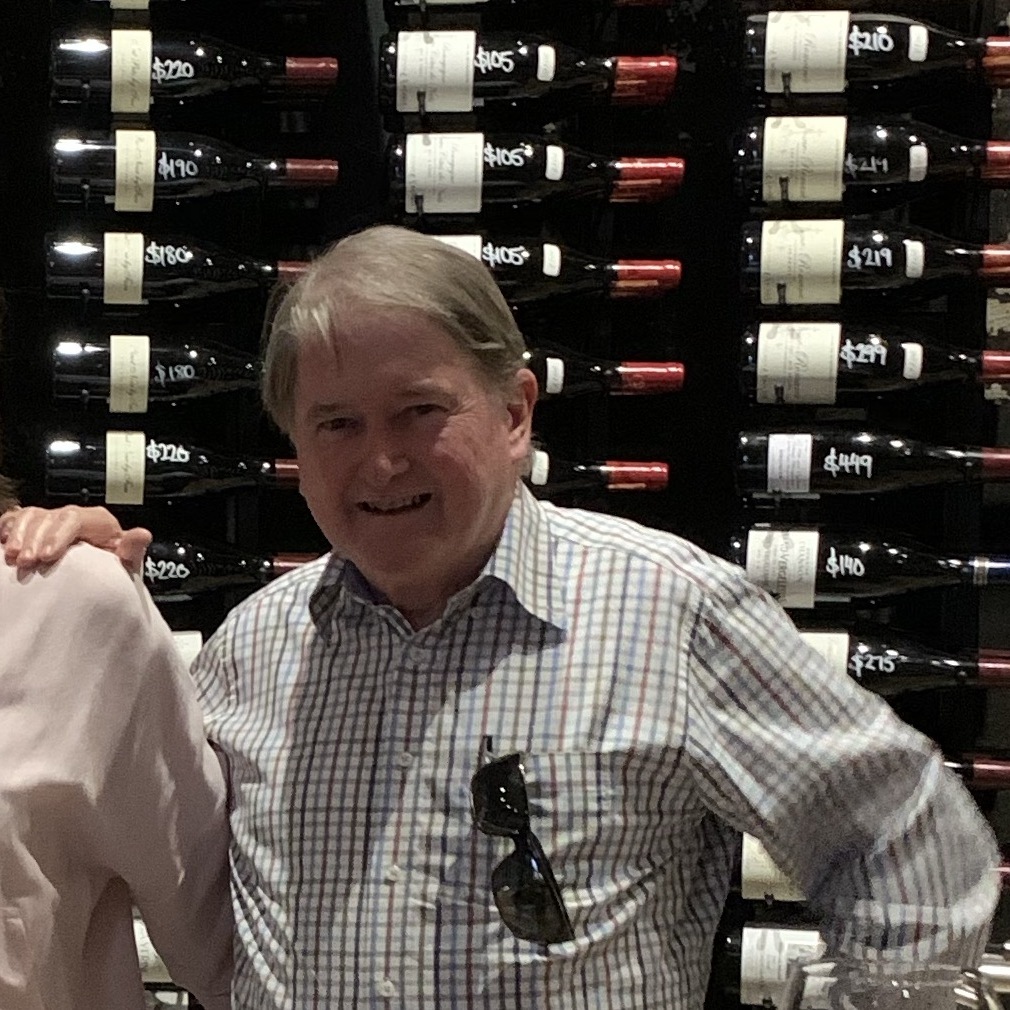
Flora Springs
Trilogy Napa Valley Cabernet Sauvignon Blend 1993
They should have called the Winery Floral Springs based on the nose. Beautiful; blackberry, black raspberries, dark cherries, strawberries, dry cranberries and plum floral fruits. Nice spice, vanilla, touch of clove & cinnamon, used leather, dark rich soil, crushed volcanic minerals, black fruit tea, black raspberry cola and dark fresh florals with violets. The tannins are 95% resolved. The body is lush & ripe. The length, tension & structure are nearing the end. Just a few years left of being worthwhile. However, the balance is stereo tuned. The fruit on the palate shows even more elegant & ripe floral fruits than the nose. Blackberry, black raspberries, dark cherries, strawberries, dry cranberries and plum floral fruits. Nice spice, vanilla, light clove & cinnamon, used leather, dark rich soil, crushed volcanic minerals, black fruit tea, black raspberry cola and dark fresh florals with violets for days. The acidity is like a waterfall. The beautiful, long, elegant finish is a little lean yet has a nice richness. Beautiful wine that just missed 9.2. Photos top to bottom and left to right. The Winery; which is separate from the other tasting room only on Hwy 29. The tasting room on Hwy 29 in St. Helena, Flora Spring caves and the front of their tasting room along Hwy 29. Producer notes and history...the stone winery on the grounds were built in 1885 by two immigrant brothers from Scotland, James and William Rennie. They were in construction, built the winery and planted 60 acres of grapes. The brothers had some bad fortune when phylloxera consumed the vines, and then a fire in 1900 destroyed their wine press and cooperage. In 1904, they sold the winery and fifteen years later Prohibition started. The winery was then closed until 1933. That year, Louis Martini, looked into their magic eight-ball and saw Prohibition collapsing and bought the Rennie property. They built a new stone house and also made a reserve wine from the hillside vineyards. However, the old winery remained empty until the Komes family bought the property, 325 acres, the old farm house, the newer stone house and 60 acres of vineyards. The son thought he’d persuade his dad to restore the old winery and proposed to call it Chateau Jerome. Although it had been designed by Hamden McIntyre an architect of several other classic 19th-century Napa wineries, by 1977, the place was a wreck. The tin roof of the building had so many holes in it. They called it the starlight roof. His father looked at it and stated, “I’ve worked all my life for my good name. I don’t want to squander it now.” John’s mother, Flora, however, sided with her son on the potential of the property. Carrie Komes suggested they could name the winery for her mother-in-law. Combined with the abundant springs on the land, they decided the name would be Flora Springs. It was a sure way to their mom’s heart and father’s wallet. Komes put his construction expertise to work on renovating the old winery, which still had scorch marks on the walls. So skeptical was his father about his son’s wine-making project, they divided the winery building. John rented half where he put his first fermenting tank, which he named R2D2. He invited a couple of friends from his wine-making class to help make wine at the new place. He also hired Mary Ann Graf, who in 1965 had been the first woman to graduate from the viticulture and enology department at UC Davis to help manage the project. She told John, “if you don’t hire a winemaker, I’ll quit.” He did and the 1979 Flora Springs chardonnay won a gold medal at the Los Angeles County Fair. In those days, it was fairs, not ratings. This was his first lesson in marketing as they sadly sold all the wine before they won the medal. Fairs were the big news instead of ratings as Parker had not yet risen to fame as he was the only one to call the grand 1982 Bordeaux vintage correctly. They submitted their 1981 Cabernet to eight fairs and won seven gold medals. From there, the winery just kept growing. They were the 67th winery in the county. Over the years, they had their ups and downs, but kept growing. One of their highlights was the creation this wine, Trilogy. It was one of the first Meritage blends in the valley. By 1984, they planted all the Bordeaux varietals; Malbec, Merlot, Cab Franc, Cabernet Sauvignon and Petit Verdot. They wanted to create a blend “by taste”, not by formula for a nice smooth wine that goes deep into the palate. They worked with a little of this and little of that. The first Trilogy was Cabernet Sauvignon, Merlot and Cab Franc. It was dubbed as velvet in the mouth. A lot of what they do is taming the tannins. One man who bought Trilogy by the case said, “it’s the only red wine his wife would drink young.” From the leftovers, they began making single-varietal estate wines. Another highlight was the discovery of a unique clone of Sauvignon Blanc in vineyards his father bought in Oakville. UC Davis could identify nothing like it in their vast library of clones. They were a bit ahead of the times, but this clone showed Flora Springs how different in that time period what Sauvignon Blanc could be like as it took all the grassiness out of Sauvignon Blanc. — 8 years ago



Vineyard 7 & 8 (Seven and Eight)
Estate Spring Mountain District Chardonnay 2013
Vineyard 7 & 8 (Seven and Eight)
Napa Valley Rosé Blend
I really really like this! — 9 years ago
Stage Left Cellars
The Breadwinner Central Coast Syrah Blend 2007
Rich and Melinda do not make shy wines. They can be, in their youth, brash and feisty. But if you let them mature a bit, you will be delighted with their poise and good manners. Only took me seven or eight years to realize this. Tonight's wine, a southern Rhone-style blend is proof of the reward that aging, even for a little, can bring. — 11 years ago







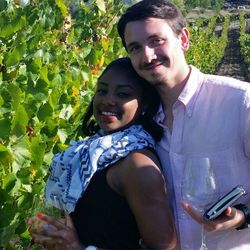


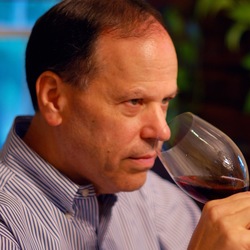




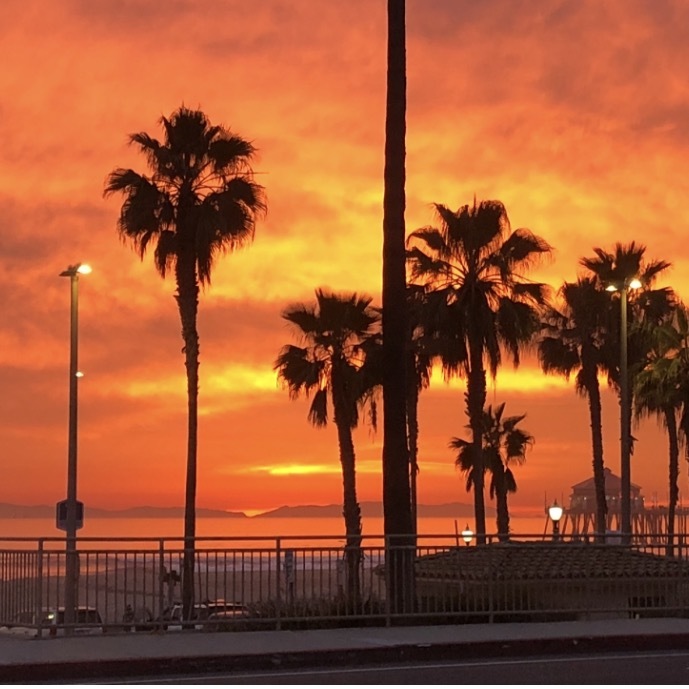

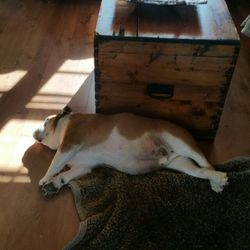
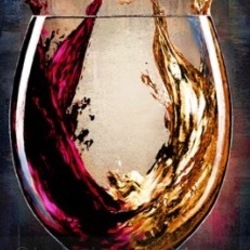






Delectable Wine

Follow to learn about our favorite wines & people.
(15% alcohol; the wine's Malbec component comes from a 1998 planting in Gualtallary, the Cabernet Franc from Altamira): Saturated ruby. Knockout vibrant nose combines dark berries, licorice and violet; already conveying a strong impression of personality. Densely packed and intense but quite fine-grained, offering terrific delineation to its flavors of crushed black fruits and violet. This very backward wine finishes with serious but suave tannins, terrific length and excellent energy and cut. I'd like to revisit this in six or seven years, at which time it may merit an even higher score. (Stephen Tanzer, Vinous, July 2018) — 7 years ago